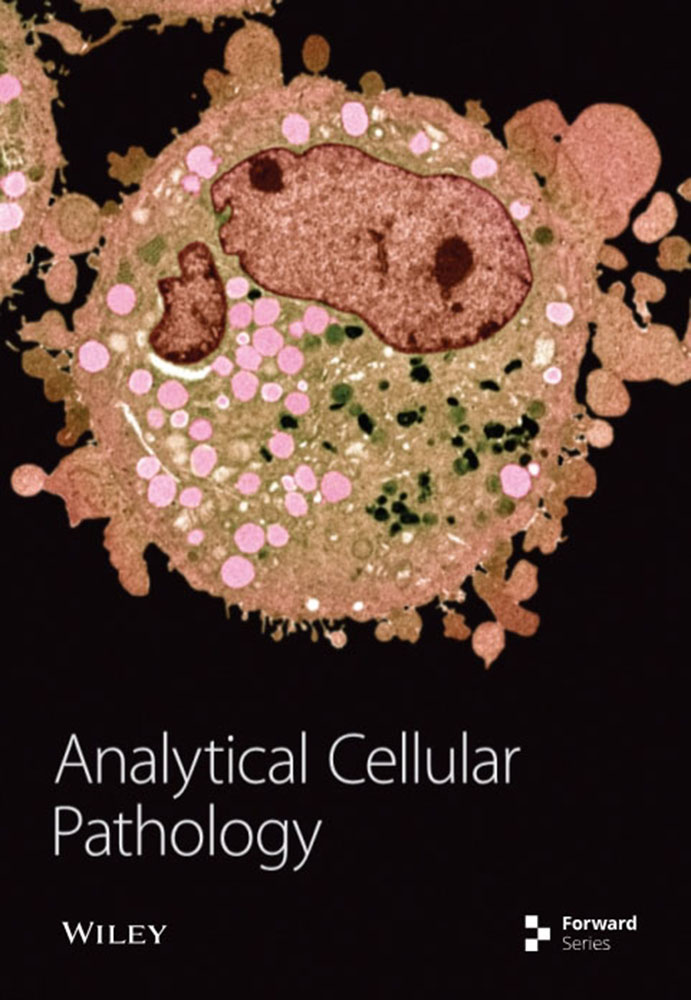Comprehensive Analysis of METTLs (METTL1/13/18/21A/23/25/2A/2B/5/6/9) and Associated mRNA Risk Signature in Hepatocellular Carcinoma
IF 2.7
4区 医学
Q3 CELL BIOLOGY
引用次数: 0
Abstract
Currently, 80%–90% of liver cancers are hepatocellular carcinomas (HCC). HCC patients develop insidiously and have an inferior prognosis. The methyltransferase-like (METTL) family principal members are strongly associated with epigenetic and tumor progression. The present study mainly analyzed the value of METTLs (METTL1/13/18/21A/23/25/2A/2B/5/6/9) and associated mRNA risk signature for HCC. METTLs expression is upregulated in HCC and is a poor prognostic factor in HCC. METTLs were upregulated in patients older than 60 and associated with grade. Except for METTL25, the remaining 10 genes were associated with the HCC stage, invasion depth (T). In addition, METTLs showed an overall alteration rate of 50%. Except for METTL13/2A/25/9, the expression of the other seven genes was significantly associated with overall survival, disease-specific survival, and progression-free survival. Multivariate studies have shown that METTL21A/6 can be an independent prognostic marker in HCC. A total of 664 mRNAs were selected based on Pearson correlation coefficient (R > 0.5), unsupervised consensus clustering, weighted coexpression network analysis, and univariate Cox analysis. These mRNAs were significantly associated with METTLs and were poor prognostic factors in HCC patients. The least absolute shrinkage and selection operator (lasso) was used to construct the best METTLs associated with mRNA risk signature. The mRNA risk signature was significantly associated with age, stage, and t grade. The mRNA high-risk group had higher TP53 and RB1 mutations. This study constructed a nomogram with the mRNA risk profile and clinicopathological features, which could better predict the OS of individuals with HCC. We also analyzed associations between METTLs and mRNA risk signatures in epithelial-mesenchymal transition, immune checkpoints, immune cell infiltration, tumor mutational burden, microsatellite instability, cancer stem cells, tumor pathways, and drug sensitivity. In addition, this study constructed a protein interaction network network including METTLs and mRNA risk signature genes related to tumor microenvironment remodeling based on single-cell sequencing. In conclusion, this study provides a theoretical basis for the mechanism, biomarker screening, and treatment of HCC.肝细胞癌METTLs (METTL1/13/18/21A/23/25/2A/2B/5/6/9)及其相关mRNA风险特征的综合分析
目前,80%-90%的肝癌为肝细胞癌(HCC)。HCC患者发展隐匿,预后较差。甲基转移酶样(METTL)家族主要成员与表观遗传和肿瘤进展密切相关。本研究主要分析METTLs (METTL1/13/18/21A/23/25/2A/2B/5/6/9)及其相关mRNA风险标志在HCC中的价值。METTLs在HCC中表达上调,是HCC预后不良的因素。60岁以上患者的mettl上调,且与分级相关。除METTL25外,其余10个基因均与HCC分期、浸润深度(T)相关。此外,METTLs的总体变异率为50%。除METTL13/2A/25/9外,其他7个基因的表达与总生存期、疾病特异性生存期和无进展生存期显著相关。多因素研究表明,METTL21A/6可作为HCC的独立预后标志物。根据Pearson相关系数(R >0.5)、无监督共识聚类、加权共表达网络分析和单变量Cox分析。这些mrna与mettl显著相关,是HCC患者预后不良的因素。最小绝对收缩和选择算子(lasso)用于构建与mRNA风险特征相关的最佳mettl。mRNA风险信号与年龄、分期和t分级显著相关。mRNA高危组TP53和RB1突变较高。本研究构建了包含mRNA风险谱和临床病理特征的nomogram,可以更好地预测HCC患者的OS。我们还分析了METTLs与上皮-间质转化、免疫检查点、免疫细胞浸润、肿瘤突变负担、微卫星不稳定性、癌症干细胞、肿瘤通路和药物敏感性等mRNA风险信号之间的关系。此外,本研究基于单细胞测序构建了包括METTLs和肿瘤微环境重塑相关mRNA风险标志基因在内的蛋白相互作用网络网络。总之,本研究为HCC的发病机制、生物标志物筛选及治疗提供了理论依据。
本文章由计算机程序翻译,如有差异,请以英文原文为准。
求助全文
约1分钟内获得全文
求助全文
来源期刊

Analytical Cellular Pathology
ONCOLOGY-CELL BIOLOGY
CiteScore
4.90
自引率
3.10%
发文量
70
审稿时长
16 weeks
期刊介绍:
Analytical Cellular Pathology is a peer-reviewed, Open Access journal that provides a forum for scientists, medical practitioners and pathologists working in the area of cellular pathology. The journal publishes original research articles, review articles, and clinical studies related to cytology, carcinogenesis, cell receptors, biomarkers, diagnostic pathology, immunopathology, and hematology.
 求助内容:
求助内容: 应助结果提醒方式:
应助结果提醒方式:


